Jura
A Discovery
Small Overview
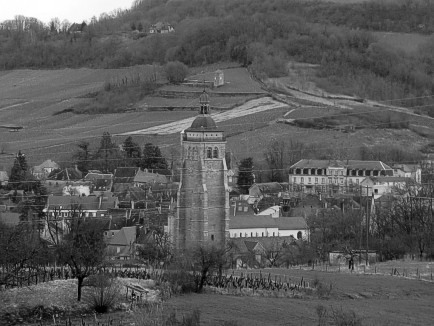
In Germany, the wine-growing region of Jura is mainly unknown. Here everybody knows Bordeaux and Burgundy for sure and then the Alsace, the Rhone and perhaps lots of the other countless French wine growing regions. Even in wine books the Jura featurs as rather exotic, too, and is often mentioned only in passing for completion's sake. The wines of Jura don't blend in with the international favourite taste, but one has to venture into it like into good music that doesn't open itself during the first listening. It is not everybody's cup of tea - and that's just the good thing about it - it even shows that it has its own real independent character. But Jura wine seems not to have any trouble in its distribution. It is consumed mainly in the Jura itself and in Paris. It isn't cheaper, anyway. Those who know and appreciate it also will know about its quality and its supreme ability to age well.
The Jura wine-growing region begins a bit south of the city of Besançon and stretches out for about 80 kilometres to the town of Arbois, where several of the bigger domains have their shops. Or you may go to Poligny into the cheese shops that not only have Cómte but of course offer Jura wines among their selection. Many wine towns have vine dresser co-operatives that sell their products. But, of course, like in any other place as well, it is most interesting to visit the vine dressers themselves. But one should at any rate ask for an opportune appointment beforehand.
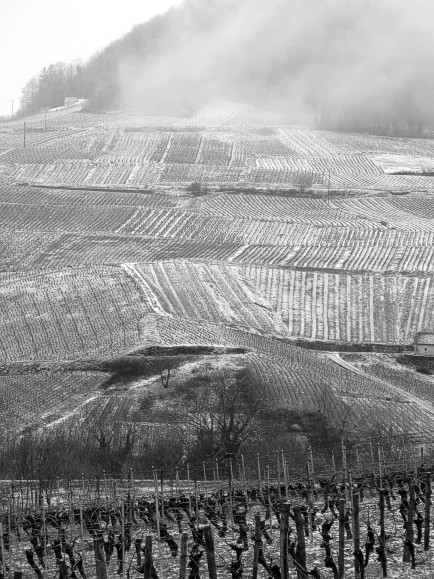
In Jura the most important vines for red wine are Poulsard, Trousseau and Pinot Noir. The vines for white wine are Chardonnay and Savagnin. Poulsard, Trousseau and Savagnin are typical Jura vines. Contrary to Pinot Noir and Chardonnay, which long ago have accomplished their victory throughout the whole world and appear in many growing regions you find them only in Jura.
The Poulsard - often also referred to as Ploussard - is a red wine of rather bright colour. In the aroma it often shows morellos and raspberry and some pepper-like tones. One doesn't drink it to warm, but a few degrees below room temperature.
The Trousseau usually is darker and fuller, its spectrum of aromas shows dark and red fruit and game tones. It is good for aging. Good vintages by good producers bear twenty years and more. Don't serve to warm, rather at 15 degrees centigrade than at room temperature.
The Pinot Noir from the Jura often turns out to be a bit more rustic than in the nearby Burgundy. It doesn't show so many wood tones and appears more down to earth. It is characterised by strawberry, blackberry and sometimes soothing bitter tones. Good bottles are definitely for storing and are worth the comparison. Like with Burgundies, 16 degrees are the recommendable temperature for consumption.
Similar the Chardonnay. Mostly it hasn't got as many vanilla and nut tones as the Burgundy, but it's fruity with its very own character. You can keep it quite well and you'll be rewarded with increasing complex structures and fine secondary aromas.
The greatest treasure of the Jura wines is the Savagnin. One finds it blended with Chardonnay - with which it goes very well - or as pure Savagnin. Often it shows aromas of almond, apple and minerals that unfold over the years and gain complex structures. It reaches its greatest merit in the Vin Jaune, in the "yellow wine". This is a Savagnin that is kept in the wood barrel for six years. The loss that occurs due to evaporation is not filled up again. So slowly and steadily one sixth of the barrel content gives way to the air. Actually, the wine should oxidize in the course of this process and be gone. But it doesn't because a layer of yeast develops, thereby protecting the wine and providing it with a unique sherry-like aroma. After the long storage in the barrel, the Vine Jaune is filled in 62 cl bottles, so-called Clavelins. Justifying the smaller bottles, people in Jura often tell the story that the missing 13cl are the share for the angels - it's evaporated in the barrel.
Vin Jaune often has walnut and butter aromas and unfolds a magnificent complex bouquet over the years. It goes very well with Comté - the well-known cheese of the region and related to the Swiss Greyerzer. Good Vin Jaune keeps for a lifetime when it is stored properly. A friend of ours from Besançon told us that this is meant literally. He said in Jura it was custom to go out and buy a bottle of Vin Jaune when a child was born. This would be kept and aged with the growing person. It was drunk on his or her funeral. Even if one gets to the age of one hundred, the wine will cope with the age. People should only wait that long if they trust in their friends. Otherwise one should rather drink it oneself - in time! This wine, as precious it may be, is also very good for cooking. Coc au Vin Jaune (chicken in Vin Jaune sauce) can be sensational and doesn't have to hide behind its Burgundy rival. One should open the bottle several hours before serving so it can develop. And never drink it too cold, not out of the fridge, but at about 14-15 degrees Celsius.
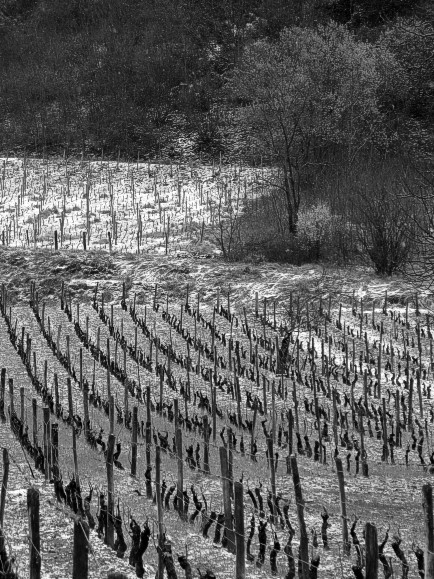
In Jura there is also a rare sweet wine - the Vin de Paille, translated it means: "straw wine". It can be stored for decades, too. It is made of ripe grapes that are kept on a wooden grid for some weeks. After that they have shrunk and almost turned to raisins. An aromatic, very complex wine which is very rich of sugar is successfully produced out of them. The Vin de Paille can be made out of all Jura vines, mostly it consists of Chardonnay, Poulsard and Savagnin. The exact mixture varies from vine dresser to vine dresser. The production bestows great efforts, 100 kilos of grapes result in only about 20 litres. Good Vin de Paille therefore isn't cheap. You drink it chilled, like white wine.
Sparkling wine is produced in Jura, too. The Crémant du Jura consists mostly of Chardonnay and can be very appealing. Definitely taste it if you like the Chardonnay of the vine dresser.
Many wine growers also offer the Macvin, a liqueur wine that consists of two thirds of grape juice and one third of Marc (pomace brandy). It has an alcohol content of about 18 percent. In Jura you drink it as aperitif or after the meal.
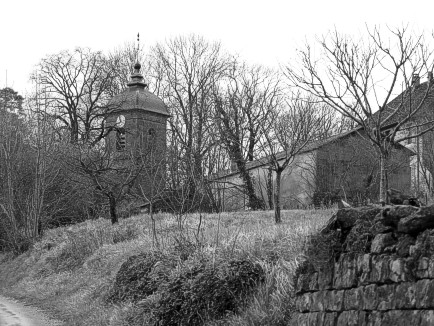
In Jura there are six origin classifications that can appear on the label, whichb are the regional topographies of Arbois, Chateau-Chalon, Etoile, Côtes du Jura, as well as the product classification Crémant de Jura and Macvin du Jura. The Arbois-Pupillin area is part of the region of Arbois, known for its very fine and fruity white wines. The origin classification Chateau-Chlon is valid for Vin Jaune only. Other wines of this growing region are labeled as Côtes du Jura. A Chateau-Chalon therefore is always a Vin Jaune and probably one of the best. On the label there's only printed "Chateau-Chalon". (But beware: Chateau-Chalon is not a producer like a Chateau in Bordeaux, but - as mentioned - a growing region containing of many wine growers.) In the other growing regions "Vin Jaune" has to be explicitly printed on the label, e.g. "Arbois Vin Jaune".
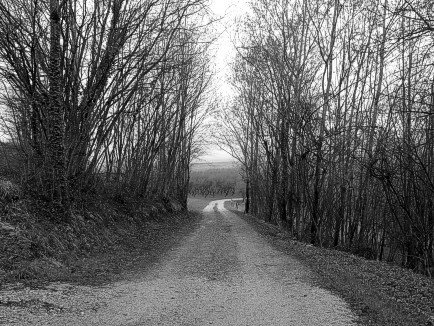
Of course in Jura the vintages are different, too. They sometimes are fuller, sometimes more filigree-like. Vin Jaune is only produced in good years. If you choose carefully, you'll get wines for storage that very rarely are disappointing and can rank among the greatest of every cellar.
Reports:
Jura 2007: Better than Snow
Jura 2002: Visit at Bacchus'
Jura 2001: Into the Land of Yellow Wine